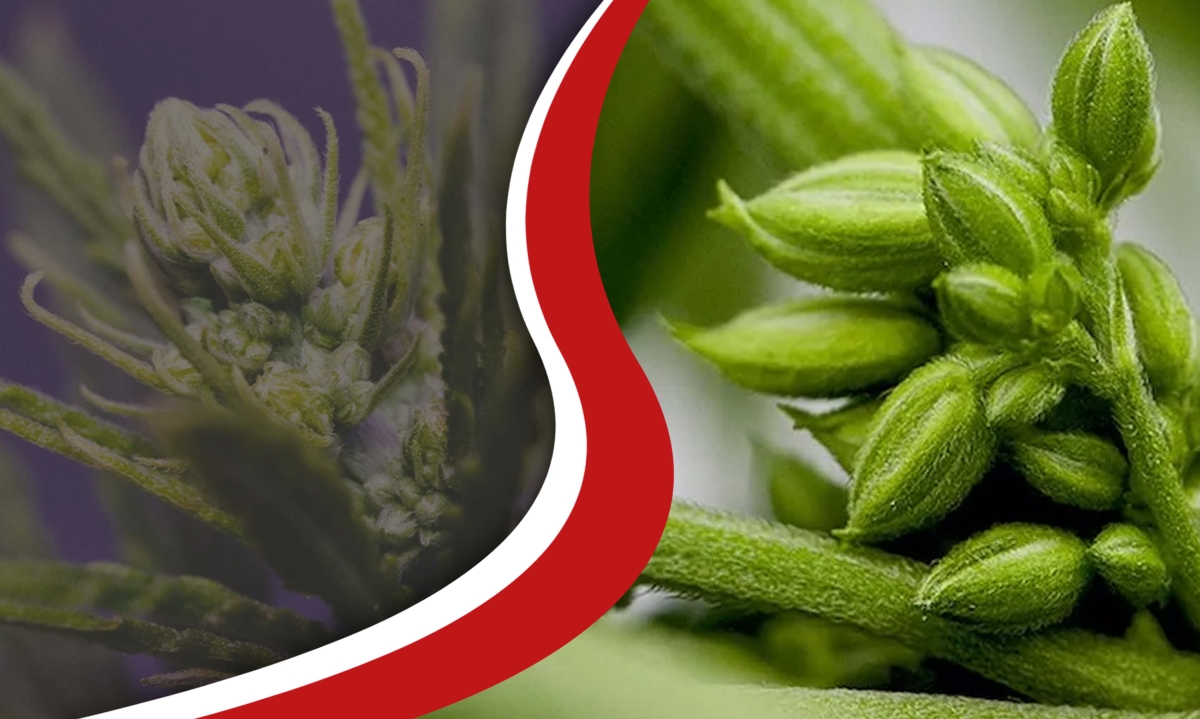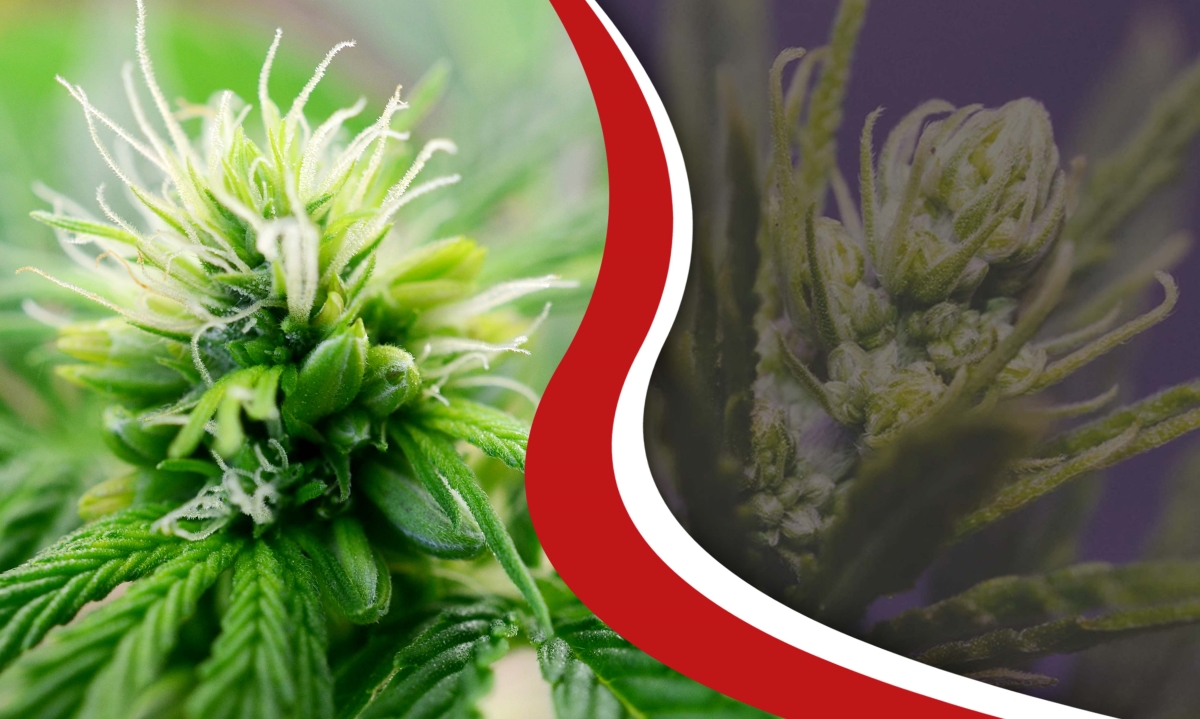When it comes to cannabis cultivation, understanding how cannabis pollen works is essential for growers seeking to harness its potential for breeding and seed production. In particular, knowing when do male plants pollinate females plants is essential for both breeders and growers. Let’s delve into the timing of pollination in cannabis and its implications for successful cultivation.
Table Of Contents
What Does a Male Cannabis Plant Look Like?
1. Pollination Process
2. Male Plant Pollination
3. Female Plant Pollination
4. Preventing Unwanted Pollination
5. Timing Considerations
When do male cannabis plants start to pollinate females?
How and When Is Cannabis Pollen Released?
Conclusion
Frequently Asked Questions
What Is Cannabis Pollen?
Cannabis pollen refers to the fine, powdery substance produced by the male cannabis plants’ reproductive organs, known as stamens. It contains the plant’s genetic material and plays a crucial role in fertilization when it comes into contact with the female plant’s pistils. Cannabis pollen is utilized in breeding programs to create new strains with desired traits, such as potency, flavor, and resilience. It can also be collected and stored for future breeding projects. However, growers often take precautions to prevent accidental pollination of female plants, as this can reduce flower quality and yield in cultivated crops.
What Does a Male Cannabis Plant Look Like?
A male cannabis plant features elongated clusters of cannabis pollen sacs, resembling small bunches of grapes, at the nodes where branches meet the main stem. These sacs, or “pollen sacs,” contain pollen, which is essential for fertilizing female plants to produce seeds. Male plants tend to have a lankier appearance compared to females, with fewer leaves and a less bushy structure. Identifying and removing male plants from the garden is crucial for preventing unwanted pollination and maximizing the yield of potent, seedless buds from female plants.
1. Pollination Process
Before delving into timing, it’s essential to grasp the pollination process in cannabis. Pollination occurs when pollen from the male reproductive organs (stamens) is transferred to the female reproductive organs (pistils) of the flower. This process is vital for seed production and occurs naturally in outdoor environments. However, indoor growers may need to intervene to control pollination and prevent undesired seed development.
2. Male Plant Pollination
Male cannabis plants start producing pollen during the flowering stage, usually a few weeks after transitioning from the vegetative phase. The exact timing can vary depending on the strain and environmental conditions. Male plants release pollen sacs, which burst open when mature, releasing pollen into the air. This pollen can then travel through the air or be transferred manually to female plants.
3. Female Plant Pollination
Female cannabis plants are receptive to pollen during their flowering stage. The timing of female plant pollination is crucial for seed production or preventing seed development, depending on the grower’s objectives. If the goal is to produce seeds, female plants should be pollinated when their pistils are white and protruding from the flower. However, it is important to keep female plants from coming into touch with pollen if seedless buds (sinsemilla) are desired.
4. Preventing Unwanted Pollination
For growers aiming to harvest seedless buds, preventing unwanted pollination is paramount. This can be achieved by separating male and female plants or using feminized seeds, which produce only female plants. Additionally, employing techniques such as covering female plants with pollen-proof bags or maintaining a strictly controlled environment can help prevent accidental pollination.
5. Timing Considerations
Timing plays a crucial role in the pollination process. Growers must carefully monitor their plants’ development to determine the optimal time for pollination or prevention measures. By observing the development of male and female plants and understanding the stages of the flowering cycle, growers can make informed decisions regarding pollination timing to achieve their desired outcomes.
When do male cannabis plants start to pollinate females?
Male cannabis plants typically begin to pollinate females once they reach sexual maturity, which occurs around 3-6 weeks into the flowering stage. At this point, male plants develop pollen sacs that release pollen into the air or onto nearby female flowers. Growers must monitor their plants closely during this period to prevent unintended pollination, as it can lead to reduced bud quality and potency in female plants.
You can identify pollination by observing the development of seeds within the female flowers. Once pollinated, female flowers will produce swollen calyxes and seeds. Additionally, you may notice the presence of pollen sacs on male plants, which release pollen into the air or onto nearby female flowers
How and When Is Cannabis Pollen Released?
Cannabis pollen is typically released from male plants during the flowering stage, usually a few weeks after the onset of flowering. Male cannabis plants produce pollen sacs, which burst open when mature, releasing pollen into the surrounding environment. The release of pollen is triggered by environmental factors such as temperature, humidity, and light cycles.
Pollen release is essential for fertilizing female cannabis plants to produce seeds. However, for growers aiming to cultivate seedless (sinsemilla) buds, it’s crucial to remove male plants before they release pollen to prevent pollination. Additionally, pollen can be collected manually and stored for later use in breeding or creating hybrid strains.
Conclusion
Understanding when male plants pollinate female plants is essential for successful cannabis cultivation. By familiarizing yourself with the pollination process, monitoring plant development, and implementing appropriate timing considerations, you can achieve your desired goals, whether it be seed production or seedless bud harvest. By taking proactive measures to prevent pollination, you can cultivate premium, seedless buds with enhanced potency and flavor. With careful planning and attention to detail, you can optimize the pollination process to enhance the quality and yield of your cannabis crop.
Frequently Asked Questions
1. How long does cannabis pollen last
Cannabis pollen can last up to a year when stored properly in a cool, dry, and dark environment. However, its potency and viability gradually decline over time. To maximize effectiveness, use fresh pollen within a few months of collection for optimal results in breeding and seed production.
2. Is it necessary to separate male plants from females to prevent pollination?
Yes, it is essential to separate male plants from females if you wish to avoid pollination. Pollinated female plants divert energy towards seed production, resulting in reduced bud quality and potency. To prevent pollination, promptly identify and remove male plants from your grow space once their sex is determined.
3. Is it necessary to separate male plants from females to prevent pollination?
Yes, it is essential to separate male plants from females if you wish to avoid pollination. Pollinated female plants divert energy towards seed production, resulting in reduced bud quality and potency. To prevent pollination, promptly identify and remove male plants from your grow space once their sex is determined.
4. What is male pollen in cannabis?
Male pollen refers to the reproductive material produced by male cannabis plants. It contains the genetic material necessary for fertilizing female plants to produce seeds.
5. Can I control male pollination in my growing space?
You can control male pollination by removing male plants as soon as they are identified. Alternatively, consider growing feminized seeds, which have a higher probability of producing female plants. Using tents or separate grow spaces for males and females also helps prevent accidental pollination.





